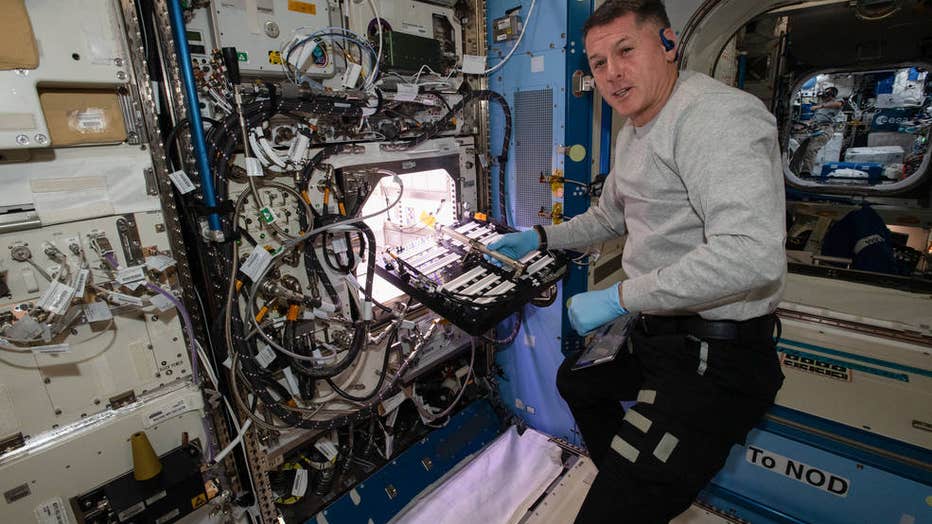NASA astronauts growing chile peppers aboard International Space Station
Astronauts aboard the International Space Station are conducting a NASA first: growing chile peppers.
The experiment, Plant Habitat-04 (PH-04), involves growing Hatch chile pepper seeds, which arrived during SpaceX’s 22nd resupply service mission in June.
The plants are expected to be fully grown and ready to consume in about four months. If successful, the peppers will become a part of the astronauts’ diets on future missions.
NASA astronaut Shane Kimbrough initiated the experiment. He helped grow the ‘Outredgeous’ red romaine lettuce in late 2016.

NASA astronaut Shane Kimbrough inserts a device called a science carrier into the Advanced Plant Habitat (APH), which contains 48 Hatch chile pepper seeds NASA started growing on July 12, 2021 as part of the Plant Habitat-04 experiment. (Credits: NAS
RELATED: Rockville High School grad worked on Mars helicopter flight
A team planted the chile pepper seeds into a device called the science carrier that goes into the Advanced Plant Habitat, or APH. It’s one of the plant growth chambers that crews use to grow crops.
"The APH is the largest plant growth facility on the space station and has 180 sensors and controls for monitoring plant growth and the environment," Project Manage Nicole Dufour said. "It is a diverse growth chamber, and it allows us to help control the experiment from Kennedy, reducing the time astronauts spend tending to the crops."
The plan is for the crew to eat some of the peppers and then send the rest back to Earth for analysis. Crewmembers will also discuss the flavor, texture and spiciness of the peppers.
Crews researched and spent about two years looking at different peppers from around the world. They picked the NuMex ‘Española Improved’ pepper, a hybrid Hatch pepper. NASA said it’s the generic name for several varieties of chiles from Hatch, New Mexico, and the Hatch Valley in southern New Mexico.
RELATED: Blue Origin reveals Jeff Bezos flight details
Principal Investigator Matt Romeyn said that in space, crew members can lose some of their senses of taste and smell. He said it’s a temporary side effect of living in microgravity. Romeyn further said peppers are rich in Vitamin C and other nutrients.
"Growing colorful vegetables in space can have long-term benefits for physical and psychological health," Romeyn said. "We are discovering that growing plants and vegetables with colors and smells helps to improve astronauts’ well-being."
NASA has experimented with growing different types of food onboard the ISS. In October 2020, Northrop Grumman launched its capsule to the ISS carrying radish seeds. In April 2021, crew members also grew leafy greens onboard the ISS.
The Associated Press contributed to this report. This story was reported from Los Angeles.


